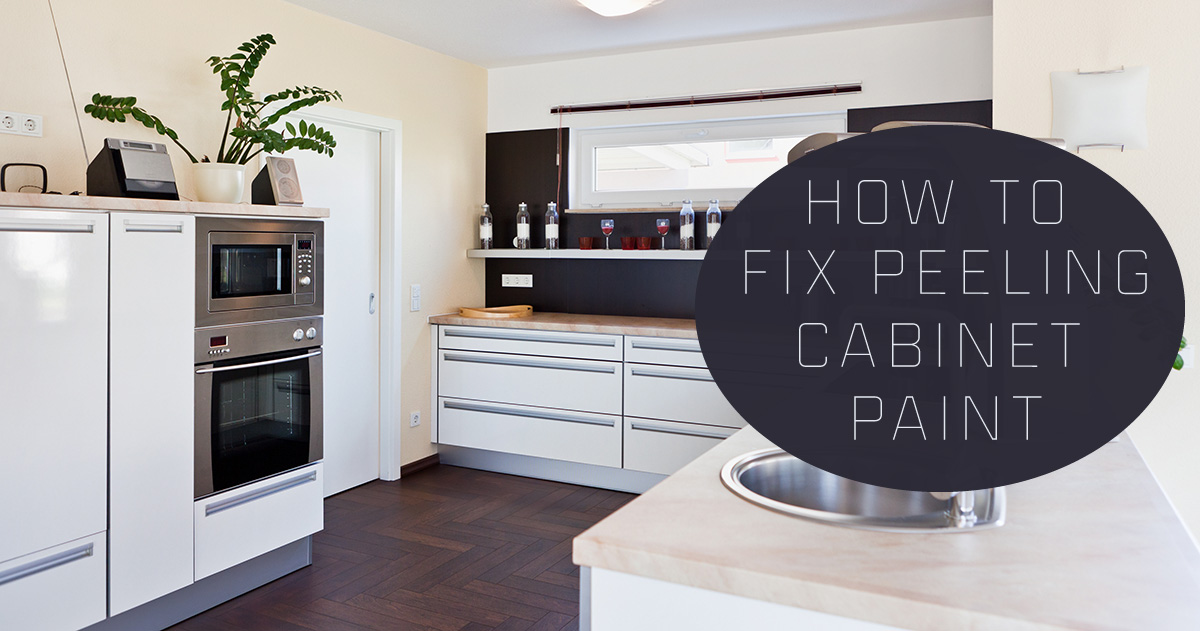How to Fix Peeling Cabinet Paint

Unfortunately, there isn’t a secret formula for fixing peeling cabinet paint. You could touch it up but it won’t look smooth. Usually, you have to start over with the cleaning, sanding, and painting. So if you are up to repainting your kitchen cabinets, here’s how you prep them. Want help painting them while also saving money? Click here.
- Prep the Area
- Label Everything
- Remove Hardware, Drawers, Doors and Shelves
- Clean Everything
- Fill the Holes
- Sand All Surfaces
- Clean Off All Dust
Since so many people are eager to get the painting, they forget that there is a lot of prep work that has to be done. Everything should be removed from the kitchen such as appliances, dishes, etc. Cover your counters and flooring with rosin paper and your backsplash, fixed appliances, windows and interior doorways with plastic sheeting. Covering everything will save you a lot of clean-up later.
It may seem like a waste of time to put labels on every drawer, door, shelve and hinge, but it will save you a lot of hassle. The hinges move differently with each cabinet so they need to be put back together the same way they were taken apart. You can use small pieces of masking tape and a pen to do the trick. Do it as you remove everything so it makes it go faster.
A lot of people think they can get away with painting around the hinges – you can’t. It may work for a little while but it won’t take long the hinges to start rubbing the paint off on your freshly painted cabinets. By removing the doors, drawers, and shelves you will be able to lay them flat and get an even coat on them.
Now comes the most important part of painting your kitchen cabinets – cleaning. Cabinets are covered in dirt, grime, and grease so if they are not properly cleaned, the paint won’t stick to them. Use a cleaner that has tsp so it can get everything off. If your cabinets are glossed, you’ll have to use a de-glossing cleaner. Wipe them down with the de-glosser and then wipe it down with a water damp cloth. If you don’t wipe off the de-glosser the paint won’t stick.
Fill in any holes in your cabinets that need filling with a two-part polyester wood or auto body filler. Since the filler shrinks, overfill them slightly and then sand off the excess.
Sanding is essential to get a smooth finish on your cabinets. Once you have sanded down every surface, vacuum up the dust and then wipe clean with a tack cloth. Hand sanding works the best for oak cabinets because you can push the paper into the grain where a power sander can’t do that.
Sanding creates a lot of dust. Allow the dust to settle, then use a vacuum to clean up the larger and more noticeable pieces. Then wipe down the cabinets with a damp cloth to ensure everything is clean.
When you take these steps before painting, they can help prevent peeling paint. If you don’t have the time or space to paint your own kitchen cabinets, Sound Finish has a solution. DIT – Do It Together – is a system where Sound Finish does 90% of the work and you pay half the price. Learn more about it here!
Sound Finish Professional Cabinet Painting and Refinishing Services
Sound Finish Provides the highest quality cabinet coatings in the industry because cabinet coatings are our primary focus and our specialty. With 20+ years of experience, our unique system paints your kitchen cabinets in 3-4 days!
Learn more and schedule a consultation today!






